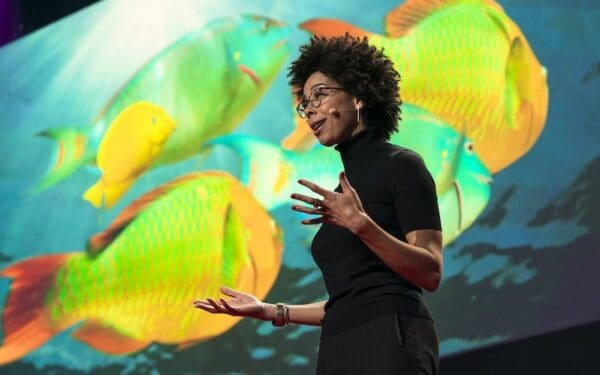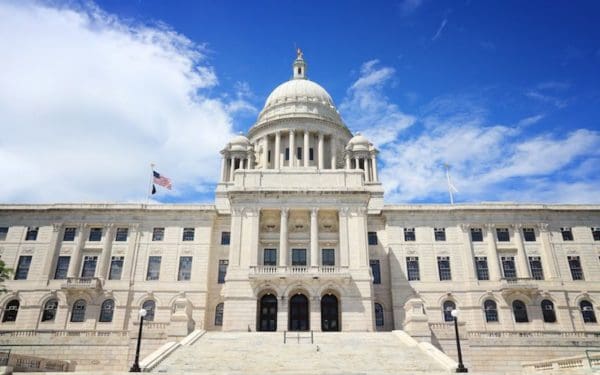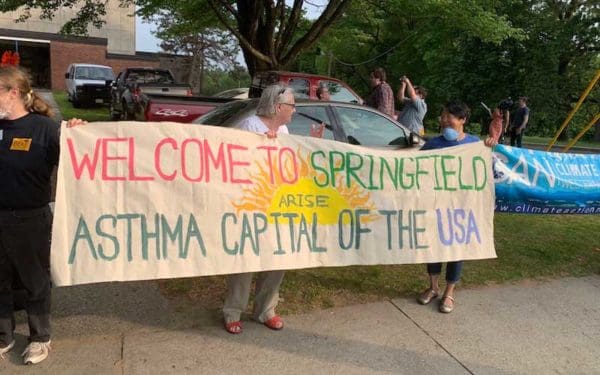Conservation Law Foundation's Great Bay–Piscataqua Waterkeeper shares a wave of good news to celebrate the power of community action and innovative collaborations. Video: Conservation Law Foundation
With headlines dominated by tough news about the pandemic and politics, you’d be forgiven if you missed some of the bright stories going on around the Great Bay estuary in coastal New Hampshire and southern Maine. From cleaner water to exciting economic opportunities, these stories give us reasons to be hopeful for the future. And, taken together, they remind us that when communities act boldly, we can turn the tide on pollution and restore the health of the rivers, bays, and coast in the Seacoast region and beyond.
A Multimillion-dollar Investment for Clean Water
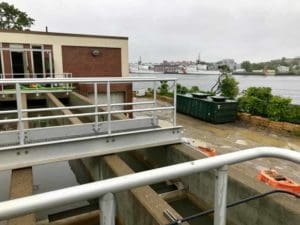
With little fanfare, something major happened in Portsmouth this summer. The Peirce Island Wastewater Treatment Facility began advanced secondary treatment of the city’s waste. At over $90 million, this facility is the largest infrastructure project in Portsmouth’s history. This investment will spare the Piscataqua River of much of the pollution that the old plant discharged. According to the Department of Public Works, the amount of nitrogen pollution from the new plant this summer averaged 5.4 milligrams per liter. This number went down from the 30 milligrams per liter averaged between 2012-2016 – a drop of more than 80%!
CLF fought long and hard for improved wastewater treatment in Portsmouth. As one of the largest wastewater plants in the entire watershed, this cleaner facility is great news in many ways for the Great Bay estuary and people in our Seacoast communities.
A Bright Economic Future for Oyster Farmers
In addition to tackling nitrogen pollution, the Peirce Island Wastewater Plant is doing a much better job killing viruses and other harmful microorganisms in wastewater before they reach the river.
This is wonderful news for the burgeoning oyster aquaculture industry in Little Bay. Over the past two years, local oyster farmers faced winter closures due to concerns that the poorly treated wastewater from Portsmouth could make the oysters unsafe. Now, thanks to the upgraded treatment plant, New Hampshire’s Department of Environmental Services and Fish and Game Department have lifted the seasonal shut-down of oyster farming in Little Bay and the Bellamy River.
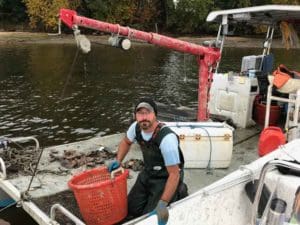
Tasty Shellfish Become Nature’s Water Cleaners
In more good news for oysters and the estuary, The Nature Conservancy, New Hampshire Sea Grant, and more than a dozen local oyster growers came together recently in a marvelous win-win story.
Beyond being delicious, oysters are efficient, algae-eating, water-cleaning machines. Each one can filter 30 to 40 gallons of water every day. In the past, millions of native oysters could filter the entire volume of water in the Great Bay estuary in just a few days. Sadly, overharvesting and disease nearly wiped out all of our native oysters, and along with them, their ability to help keep the estuary clean. So, restoring oysters is both good for the local economy and critical to the health of the ecosystem.
Oyster farmers were hit hard by COVID-19-related restaurant closures this summer. Thus, it came as welcome news that The Nature Conservancy would buy hundreds of thousands of farm-raised oysters that had become too big for the restaurant market. These mature mollusks will be distributed on the oyster reefs being built in Great Bay. This action will help repopulate the estuary and enhance water quality.
Lush Eelgrass is Making a Comeback
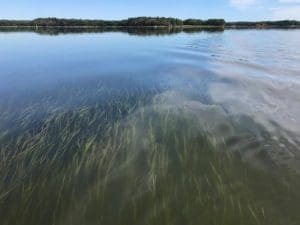
And how about the underwater seagrasses (another cornerstone of healthy estuaries) – any good news stories there?
The answer is, anecdotally, YES! While the drought that plagued much of New England this summer was tough for farmers and others, there was a silver lining for the Great Bay estuary. Fewer rainstorms and less stormwater meant less sediment and pollutants washed into our rivers and bays. As a result, the water in the estuary was much clearer, allowing more sunlight down into the water. This seems to have pleased eelgrass beds, which have been disappearing in the last few decades.
In fact, scientists who’ve been underwater reported healthier, more lush growth of this plant, which is critically important for habitat and life in the estuary. Residents along the shore noted unusually thick deposits of eelgrass in beach wrack. These indications of improved water quality signal the perfect timing for a collaborative effort, which I have spearheaded, to develop a long-term plan for restoring eelgrass in the Great Bay estuary and helping the recovery of this vulnerable, valuable ecosystem.
Let’s keep the wave rolling!
Make no mistake – our work is not done to reduce pollution in the Seacoast region’s rivers and bays. Just last week, EPA released the long-awaited Total Nitrogen General Permit for Great Bay, which will require communities to do more to improve the health of the estuary. We hope this new permit will accelerate actions in our communities to reduce the pollution that washes into our waterways every time that it rains.
In the meantime, we should applaud progress and tangible evidence that when we work together, make investments in infrastructure, and keep stormwater from fouling our waters, the ecosystem does respond. So, let’s celebrate this good news for a change and keep focused on the work ahead to improve the health of New Hampshire and southern Maine’s rivers, bays, and coast.

